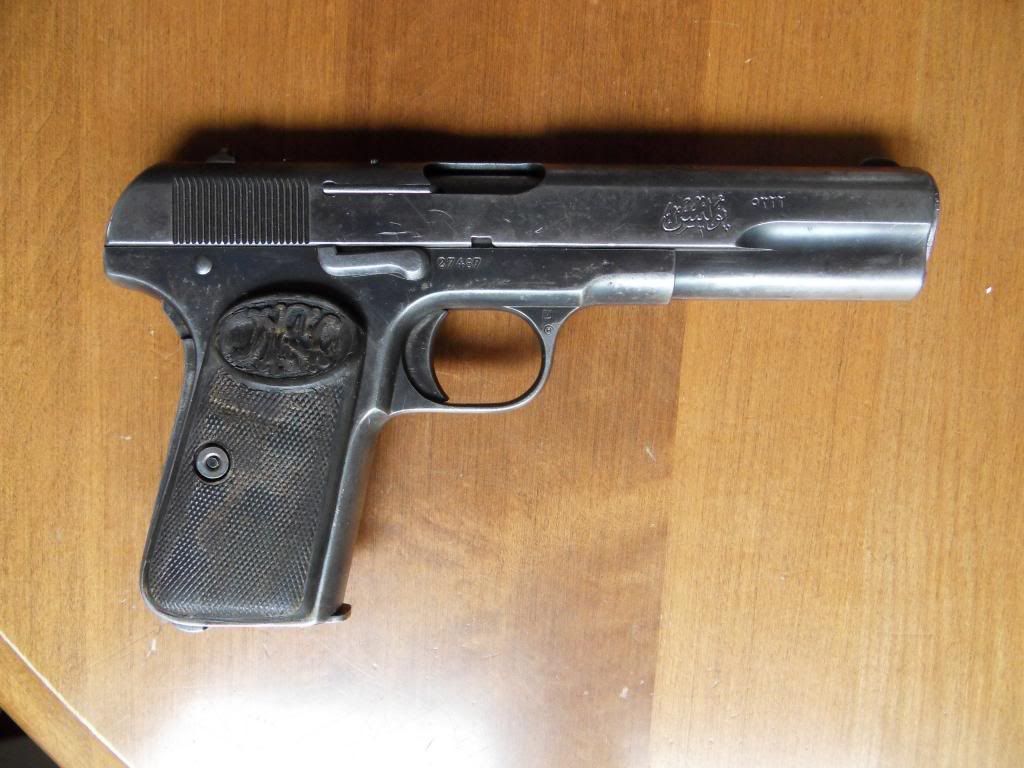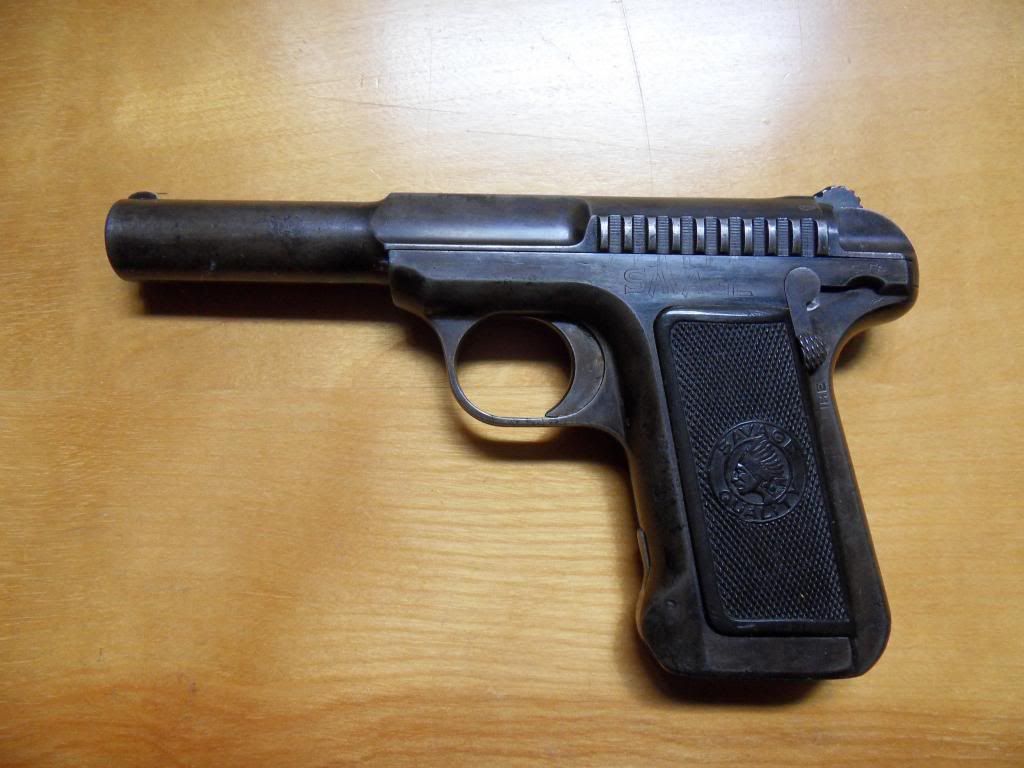
 |
|
#11
|
||||
|
||||
|
What's the grip of the sabre made of? That's not plastic, is it?
I did a page for Ryan's Daughter and it had the Germans supplying Irish rebels with Mauser 1871s. It looks like David Lean's reputation for being a stickler for details was true.
__________________
"Me fail English? That's unpossible!" |
|
#12
|
|||
|
|||
|
Yes, it is bakelite. I believe the earlier ones used a hard black rubber, but they switched to bakelite for some reason (my guess is that it wears less).
|
|
#13
|
||||
|
||||
|
I didn't think they used plastic back in 1908.
__________________
"Me fail English? That's unpossible!" |
|
#14
|
|||
|
|||
|
Well, bakelite isn't quite the same as modern plastics - it's got more of a glassy texture, and tends to break more easily than modern plastic. Oddly this doesn't have the same texture as other bakelite items I've handled, it's much closer to modern plastic.
I looked at the page for Ryan's Daughter and you're right, those are actual IG71s, not even 71/84s. Nice touch! Michael Collins and Rebel Heart, the only two onscreen depictions of the Rising that I've seen, just went with a mix of short and long Lee-Enfields and Gewehr 98s. They could have gone with relatively common 71/84s, although I suspect there's not alot of 11mm Mauser blanks out there. Interesting bit of historial trivia, the Howth Mausers were smuggled in by Boer War veteran and novelist Erksine Childers, who wrote a very popular thriller novel called The Riddle Of The Sands (voted one of the best 100 novels of all time), who at the time of the Rising had actually returned to the British military and was serving in London. He later rejoined the Irish nationalist movement and was executed by the Irish Free State government during the Civil War in 1922. |
|
#15
|
||||
|
||||
|
That's why I was surprised they'd use it in something like a sword, especially the grip.
__________________
"Me fail English? That's unpossible!" |
|
#16
|
|||
|
|||
|
Quote:
I don't know if this was done to the handle in the p1908, but you also got "composite" bakelite of various types which was more resilient and had a different texture, which was made by forming the resin on a textile base of some sort such as linen or canvas. |
|
#17
|
||||
|
||||
|
I posted screencaps of the P1908/1912 sabers on the War Horse page. No good images of the grip though.
__________________
"Me fail English? That's unpossible!" |
|
#18
|
|||
|
|||
|
Well, haven't posted too much here lately, but got some new stuff that may be of interest.
 First was a WW1 Ottoman Military Police contract FN Browning 1903 pistol in 9mm Browning Long, with all the original Ottoman markings. The Ottoman Empire never went for handguns in a big way, their only purchases in the era were 1000 Mauser C/96s for the Navy, and 1000 of these Brownings for the Military Police. This one isn't in awesome shape, but few of these are - they were used hard and didn't get a ton of attention from armorers after WW1 when they became obsolete.  Then I got a French issued, Spanish made Cordero revolver. The French purchases of Ruby pistols during WW1 in well known, what's less known is that they were also buying anything the Spanish arms making industry could turn out in their standard 8mm revolver cartridge. There are dozens of different makers, primarily copies of S&W and Colt designs, and quality tends to vary between "I can't believe it's not a real S&W" to "I can't believe it's not a cap gun". This one is a pretty much straight copy of a Colt Police Positive Special, and is definitely one of the best quality examples.  Most recently I won at auction a Savage 1907 in .380, made around late 1914 / early 1915. Very cool gun, very unique design - a double stack striker fired pocket auto with a loaded chamber indicator in 1907! Although the French and Portuguese used these in WW1 they were all in .32 ACP, this one being clearly a commercial example (although it has British import proofs so it could conceivably have been carried as a backup by a British officer during the war), but it definitely fits into my gangster era collection.  In terms of long guns, I picked up a French Tabatiere Mle 1867 rifle, a Mle 1842 musket or Mle 1853 rifle converted to breech loading using the Snider breech system. Basically the French equivalent to a Snider-Enfield or early Springfield-Allin conversion. It fires a huge 17 x 32mm round (basically a short shotgun slug), and was used to arm second line troops during the Franco-Prussian War due to the shortages of Chassepot needle rifles. |
|
#19
|
|||
|
|||
 Finally, and least exotic, I picked up a 1945 Ishevsk Mosin-Nagant M44 carbine, to replace the 1953 Polish production one I sold a few years ago. I wanted a wartime example as used during the advance into Germany, and this one fit the bill nicely! The nice thing about this one is unlike most of the WW2 Mosins out there it's not a refurb, and has the original unshellaced stock. |
|
#20
|
||||
|
||||
|
I can't believe the logo for the Savage is an Indian head. Reminds me of the time I saw the emblem for the USS Savage. File it under "Stuff you can't get away with today" I guess.
http://www.navsource.org/archives/06/386.htm
__________________
"Me fail English? That's unpossible!" |
 |
|
|